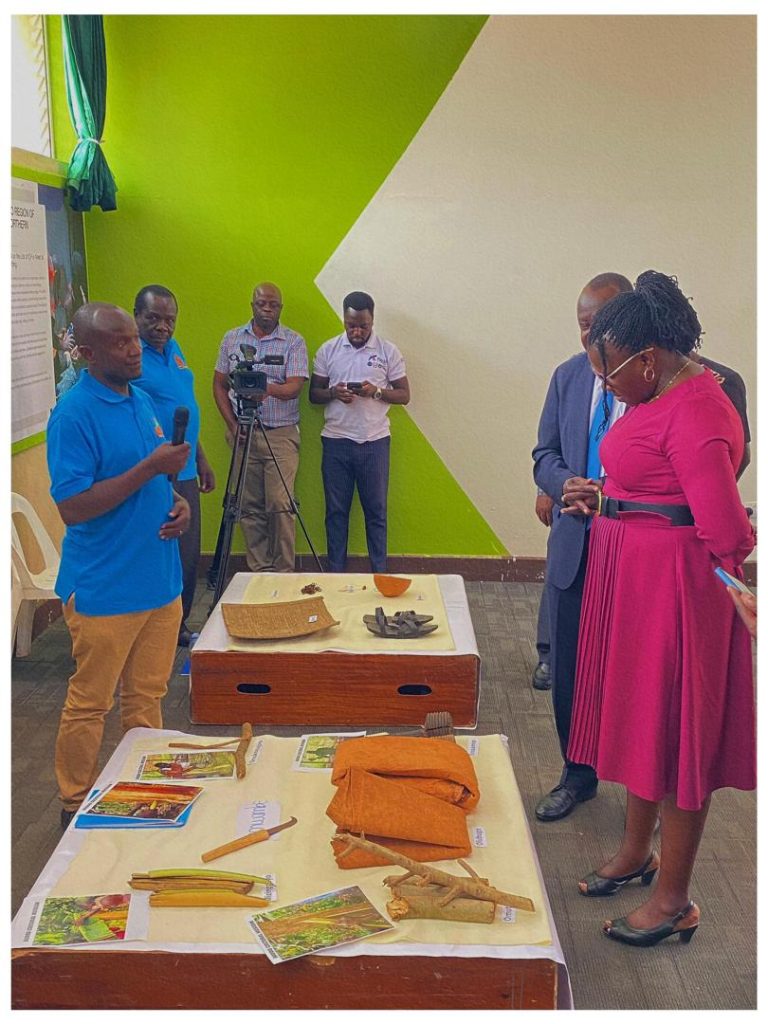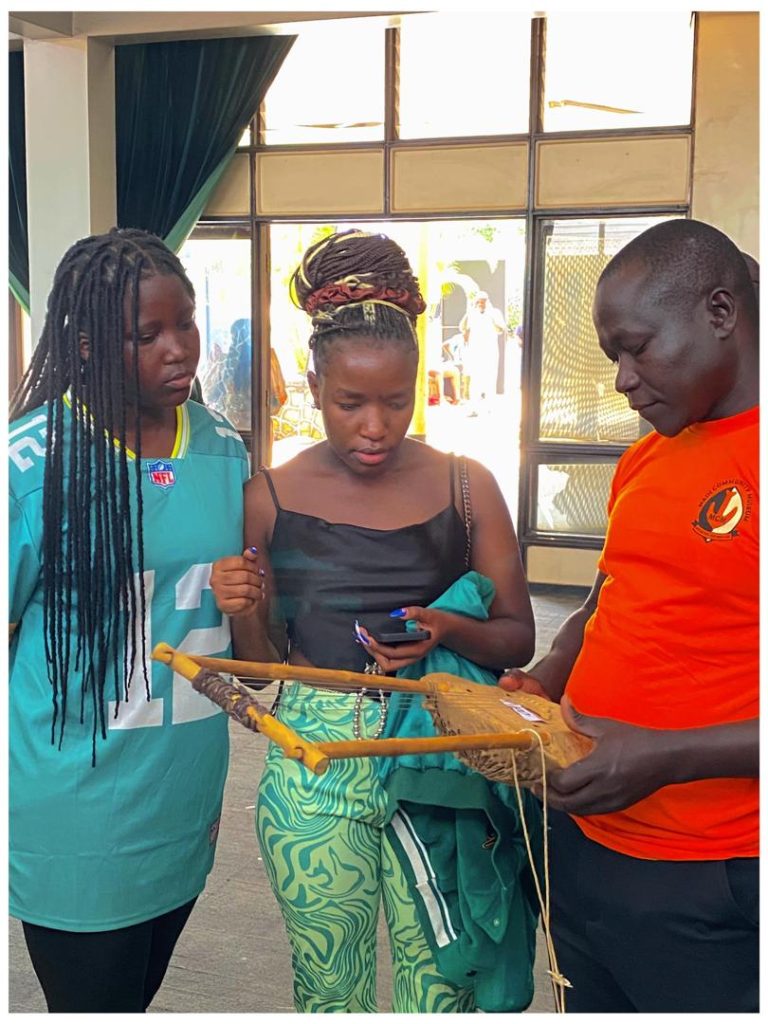The Ambassador of Uganda to France launches Uganda’s ICH Exhibition
In a cultural milestone, Uganda held its inaugural National Intangible Cultural Heritage (ICH) Exhibition at the National Theatre, spotlighting six cherished traditions from across the nation.
Organised by the Uganda Community Museums Association (UCOMA) in partnership with the Cross-Cultural Foundation of Uganda (CCFU), Uganda National Commission for UNESCO (UNATCOM), ICOM Uganda, Uganda National Cultural Centre (UNCC), and the Ministry of Gender, Labour and Social Development (MGLSD), with support from UNESCO, the two-day showcase brought community-rooted traditions back into public view.

Among the six UNESCO-inscribed cultural gems featured were:
Bigwala gourd trumpet music and dance, a Basoga royal tradition symbolising unity and authority through ceremonial performance.
Koogere oral tradition, narratives from the Basongora, Banyabindi, and Batooro of western Uganda, celebrating female leadership and moral wisdom.
Madi bowl lyre music, poetic and emotive music from the Ma’di people in West Nile aimed at cultural memory transmission.
Empaako naming system, a tradition of giving praise names (e.g., Adyeeri, Amooti, Acaali) among the Batooro, Banyoro, Batuku, Batagwenda, and Banyabindi to reinforce identity and social harmony.
Male child cleansing ritual of the Lango people, marking the transition into adulthood for young males in Northern Uganda.
Bark-cloth making, the centuries-old Buganda artisanal craft using Mutuba tree bark, rich in ritual and artistic expression.
These traditions, while once vibrant, had diminished over time and survived only through a few remaining bearers. Thanks to UNESCO-supported safeguarding, they are now experiencing a fragile but hopeful revival.
“This exhibition is both a celebration and a call to action,” said Mr Kitaulwa Abraham, Chairperson of UCOMA. “It reminds us that Uganda’s cultural identity lives not only in monuments, but in traditions, names, music, and rituals passed through generations.”
A Platform for Cultural Diversity and Reflection
Beyond the officially inscribed elements, the exhibition offered a broader cultural landscape through university-led showcases:
Kyambogo University presented Baganda funeral rites, bone-setting, Luwombo (traditional cooking), and child-naming ceremonies.
Islamic University in Uganda (IUIU), Mbale featured the Imbalu male initiation rite, indigenous food preparation like Malewa among the Bagisu, traditional governance, and worship systems.
Uganda Martyrs University, Nkozi highlighted drum-making, clan systems, and spiritual beliefs.
Kabale University brought forward Kigezi highlands music and dance traditions like Ekizino and Kakitaari, local beer-making, and healing practices.
These contributions enriched the exhibition’s narrative, demonstrating the breadth of Uganda’s living heritage that warrants both celebration and preservation.

Voices from the Exhibition
Permanent Delegate of Uganda to UNESCO, H.E. Ms Doreen Ruth Amule, affirmed Uganda’s commitment to heritage safeguarding. Since presenting her credentials in July 2022, she has advocated for UNESCO’s technical support in cultural reconstruction, language preservation, and safeguarding intangible heritage. At the exhibition, she reflected:
“This event represents the meaningful partnership between Uganda and UNESCO, reinforcing our shared mandate to safeguard intangible heritage as a foundation of identity and sustainable development.”
Cross-Cultural Foundation of Uganda (CCFU)’s Deputy Executive Director, Fredrick Nsibambi, emphasized the urgency of preserving these traditions. Drawing from their Heritage Education Programme successes, like supporting over 164 school heritage clubs and integrating ICH into university degrees, they stated:
“We need to appreciate that ICH, which is a source of people’s identity and sense of wellbeing, is delicate and prone to changing trends. We must take action to safeguard ICH now, not tomorrow, not at some other time”
Uganda National Cultural Centre (UNCC), the statutory body charged with promoting culture and housing the National Theatre, voiced the imperative of cultural transmission. Its Executive Director, Francis Peter Ojede, said at a related event:
“Today, when you go to many of the villages, you don’t see a lot of these cultural aspects yet these define who we are. We need to preserve culture to be transferred to future generations.” 
Outcomes and Future Direction
The exhibition drew a diverse audience of cultural practitioners, students, researchers, university delegates, policymakers, and community museum representatives. It served dual purposes: raising public awareness of intangible heritage and fostering dialogue on its preservation and transmission to younger generations.
By presenting this national focus on living traditions, the exhibition affirms that culture flourishes in people and practices—not just in monuments. It underscores community museums, educational institutions, and civil society as pivotal in safeguarding Uganda’s cultural memory for the future.

